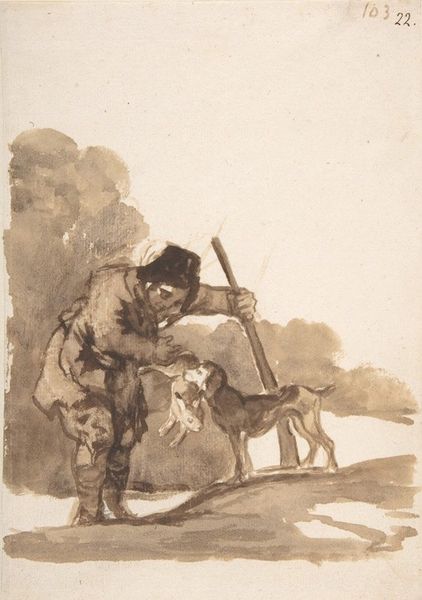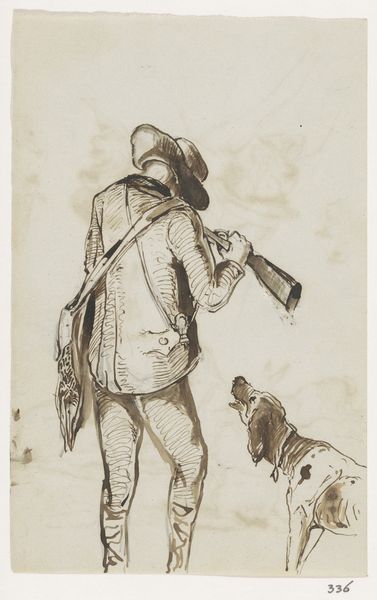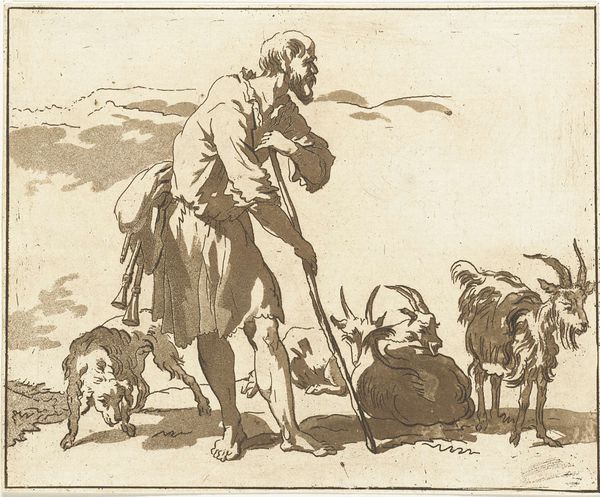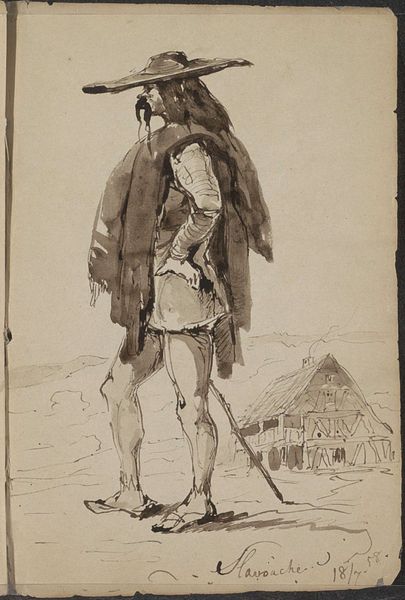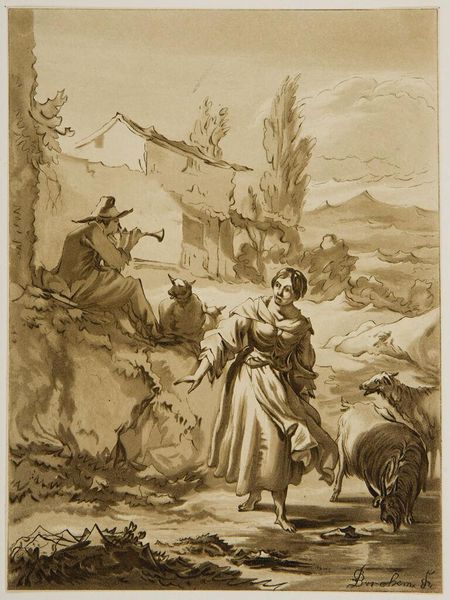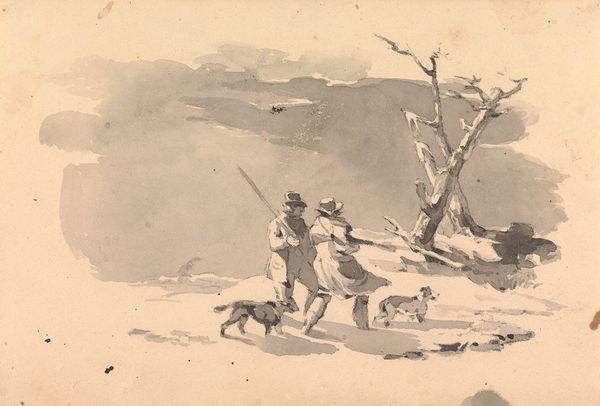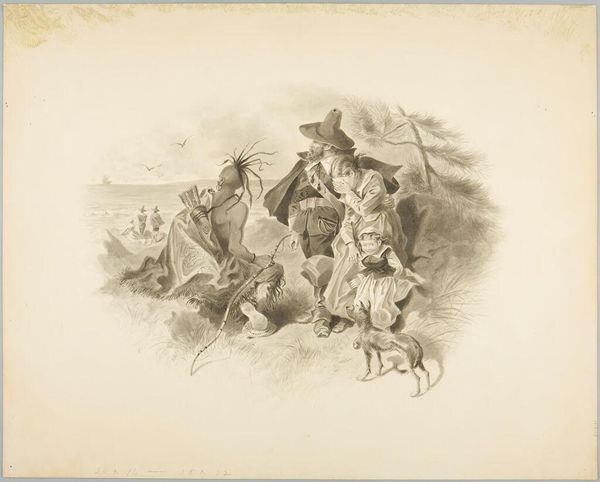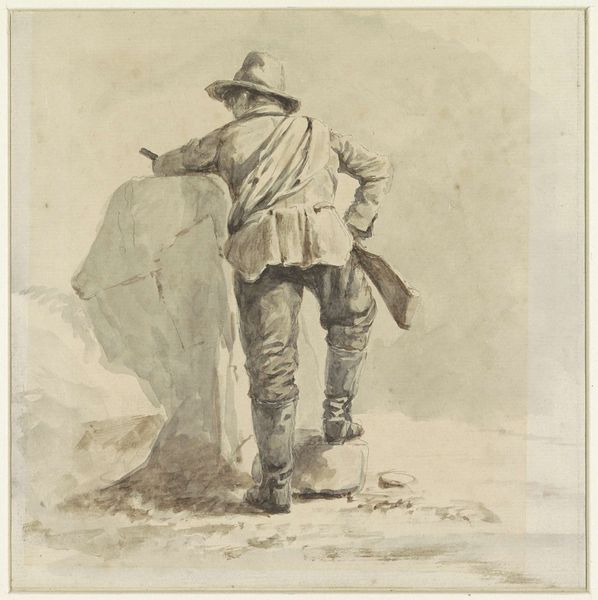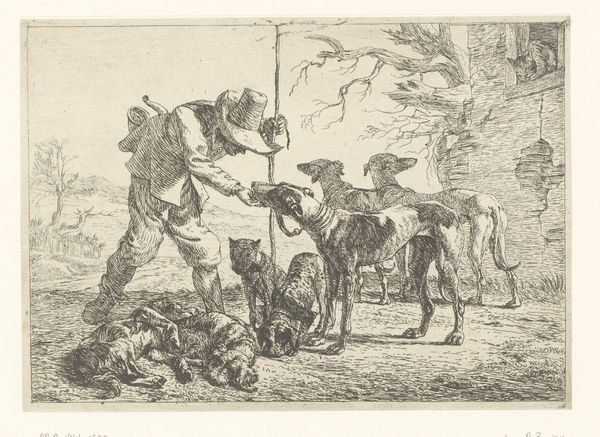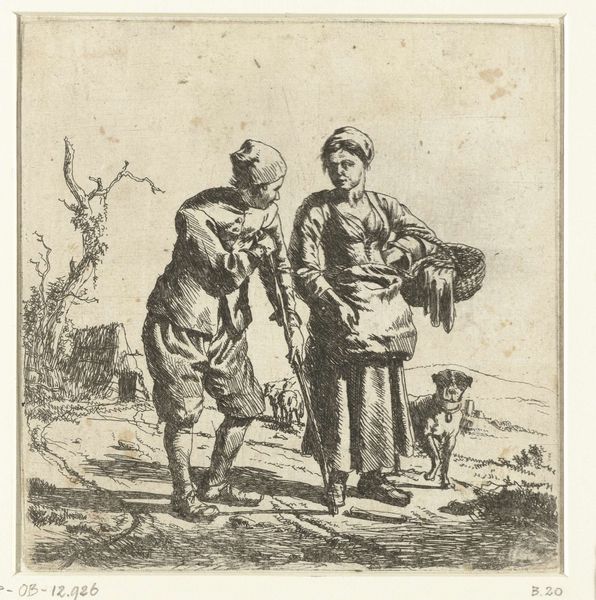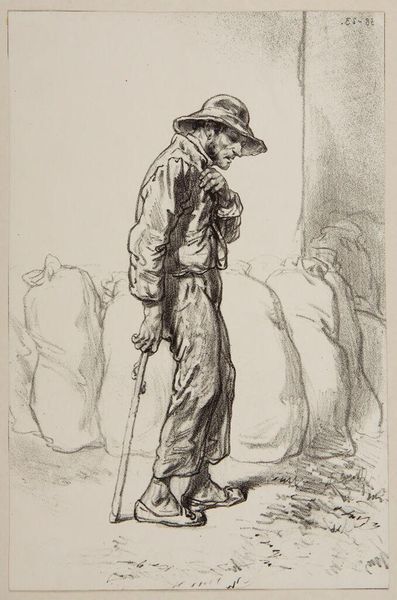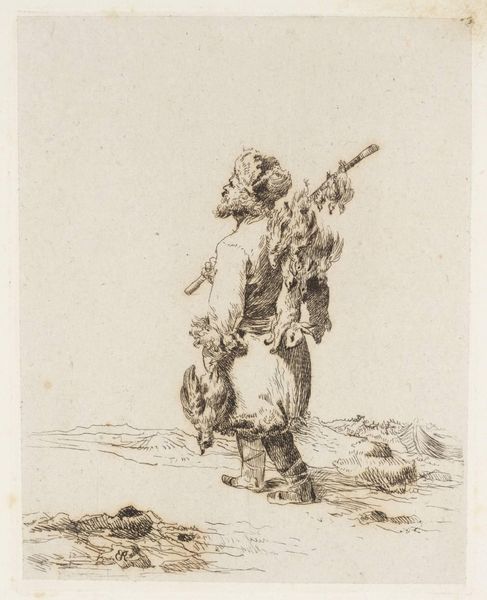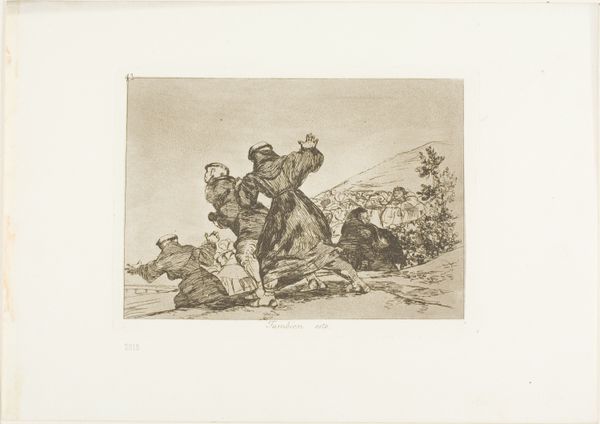
drawing, paper, ink
#
portrait
#
drawing
#
baroque
#
dutch-golden-age
#
pencil sketch
#
caricature
#
paper
#
ink
#
pencil drawing
#
portrait drawing
#
genre-painting
Dimensions: height 204 mm, width 157 mm
Copyright: Rijks Museum: Open Domain
Cornelis Dusart created this drawing of a young man with a peepshow and a dog in the late 17th or early 18th century. Dusart was known for his depictions of peasant life, reflecting a broader interest in everyday scenes during the Dutch Golden Age. This image offers a glimpse into the lives of ordinary people, and the forms of entertainment available to them. The young man, likely a traveling entertainer, carries a peepshow, a portable box offering viewers a miniature, often wondrous, scene. The dog, ever present, hints at companionship, but also the itinerant nature of the young man's work. Consider the social class of the young man. The choice to portray a commoner suggests an interest in democratizing art, moving away from solely depicting nobility or religious figures. At the same time the drawings leaves us to consider the economic realities of 17th century life, and the ways in which people survived through entertainment. The artist emphasizes not only the material conditions of the young man's life, but also his relationship with the natural world, and the possibilities and limitations of entertainment in Dutch society.
Comments
rijksmuseum about 2 years ago
⋮
The boy is holding a peepshow, a picture in a box with doors that open. He is pointing to the scene portrayed in the box and singing or telling the story. Artisans like this boy would travel to fairs and markets to entertain the punters with their sensational, and often quite gruesome tales.
Join the conversation
Join millions of artists and users on Artera today and experience the ultimate creative platform.
